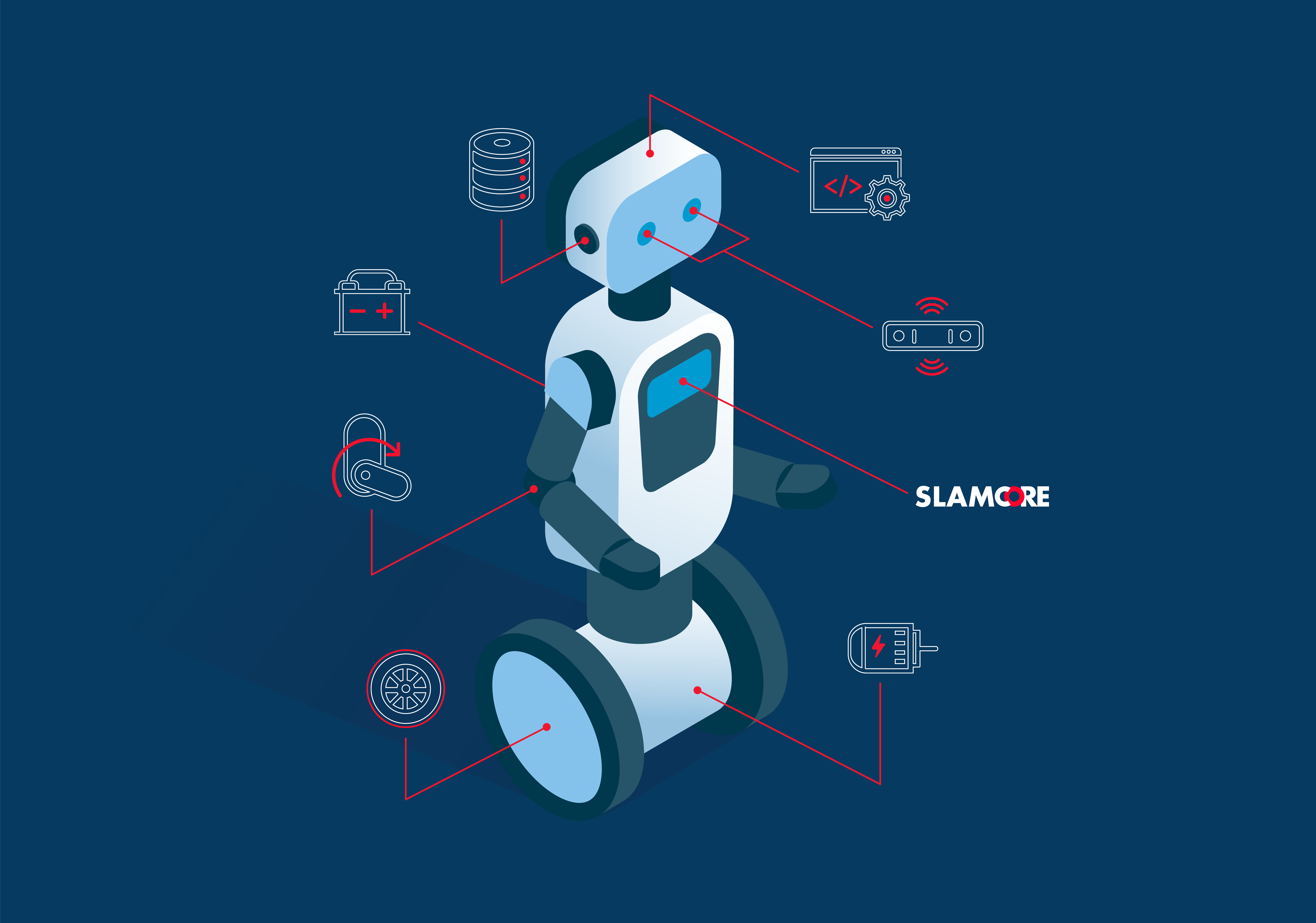SLAMcore has a clear mission and passion to not only develop the best algorithms to help robots and drones understand where they are and what’s around them, but to transform the robotics industry and society as a whole by making it easier to design and build commercially successful robots. This, the global calibre of the team, and the fast moving, solution-orientated focus of a start-up were all key factors in my decision to join SLAMcore’s team as Head of Strategic Partnerships at the end of last year.
The company has already established itself as a leader in the SLAM arena with its highly efficient and accurate systems based on camera and inertial sensors. My role will be to help solve another aspect of the challenge – identifying key hardware firms and partner with them to deliver SLAMcore’s highly reliable positioning and mapping intelligence on low power, cost-effective hardware. We’ve already demonstrated how SLAMcore algorithms can run effectively on low-cost low-power chips like Raspberry Pi’s – now we want to build an ecosystem of hardware to meet the varied requirements of robot designers creating solutions to a broad range of challenges.

No dedicated silicon
The robotics market is experiencing huge growth, almost 20% per year over the next 5 years, but nevertheless, the ecosystem to support robot developers remains immature. Although growing fast, the market is still relatively small in terms of units. Overall volumes of processors and sensors needed by the robotics industry fall way below that of other adjacent markets, for example, the mobile phone industry which creates demand for tens if not hundreds of millions of standardised components. This means that few companies are willing to make the multi-million dollar investment needed to develop dedicated processors or sensors specifically for robots.
With commercially affordable, dedicated hardware solutions still some way away the robotics industry has looked to use those high-volume components manufactured for mobile devices. The automotive industry is also proving to be a useful source as it looks to automate and invest in sensors and silicon at significant volumes. There are similarities between the demand of these markets and the needs of robots. For example, SLAMcore utilises cameras and motion sensors from smartphones as the low-cost hardware feeding data to its algorithms.
Similar, but not identical
But the markets and the use-cases are not identical, and in some ways are very different. As suggested above, the mobile phone industry in particular benefits from a very high level of standardisation – for example there are just two operating systems to worry about. Robots do not run on Android (ironically). Plus smartphone components enjoy a rapid introduction and rise to peak sales, but these last a matter of months before the next generation quickly makes them redundant. Phones are replaced rather than repaired and new models easily substituted. In contrast, to be cost-effective, robot designs will be sold, maintained and supported for many years; components need to be available over these extended lifecycles. And whilst automotive components have both the longevity and the environmental tolerances (high operating temperatures) needed by some robots, the design cycles in the automotive industry are too slow with more legislation than is necessary to meet the demand of most robotics applications.
Understanding these differences and knowing how to utilise, adapt and integrate mass-market silicon and sensors into the complex products needed to support robot designs is crucial. My previous roles in research at Imagination Technologies and Mitsubishi Electric, as well as my PhD in computer vision have shown me just how hard SLAM can be to deliver. It is in the best interests of silicon and sensor designers as well as the robotics industry to start to collaborate and co-create products that can capitalise on the emerging opportunities.
Co-creation ecosystem
Fostering this collaboration is central to the new role I’ve taken on at SLAMcore – connecting the hardware world with the cutting-edge Spatial AI work that SLAMcore is leading. Selecting and designing in the right hardware is crucial to the success of any SLAM system and many of our customers and contacts are actively searching for the right solutions. Hardware designers and manufacturers have solutions and are looking at robotics as an exciting new market but need help to adapt their chips and sensors to address it effectively.
My role is to connect the two, creating understanding and bridging the requirements of each so that both can deliver on the promise of robotics. As a result, I want to talk to as many hardware businesses as I can and use SLAMcore’s knowledge of the robotics market to help them help developers build better robots.
I am looking forward to speaking to contacts old and new, and to meeting with experts at conferences and shows over the coming months. If you’ve got a hardware solution that can support SLAM, and you want to access robot designers around the world, please get in touch.

